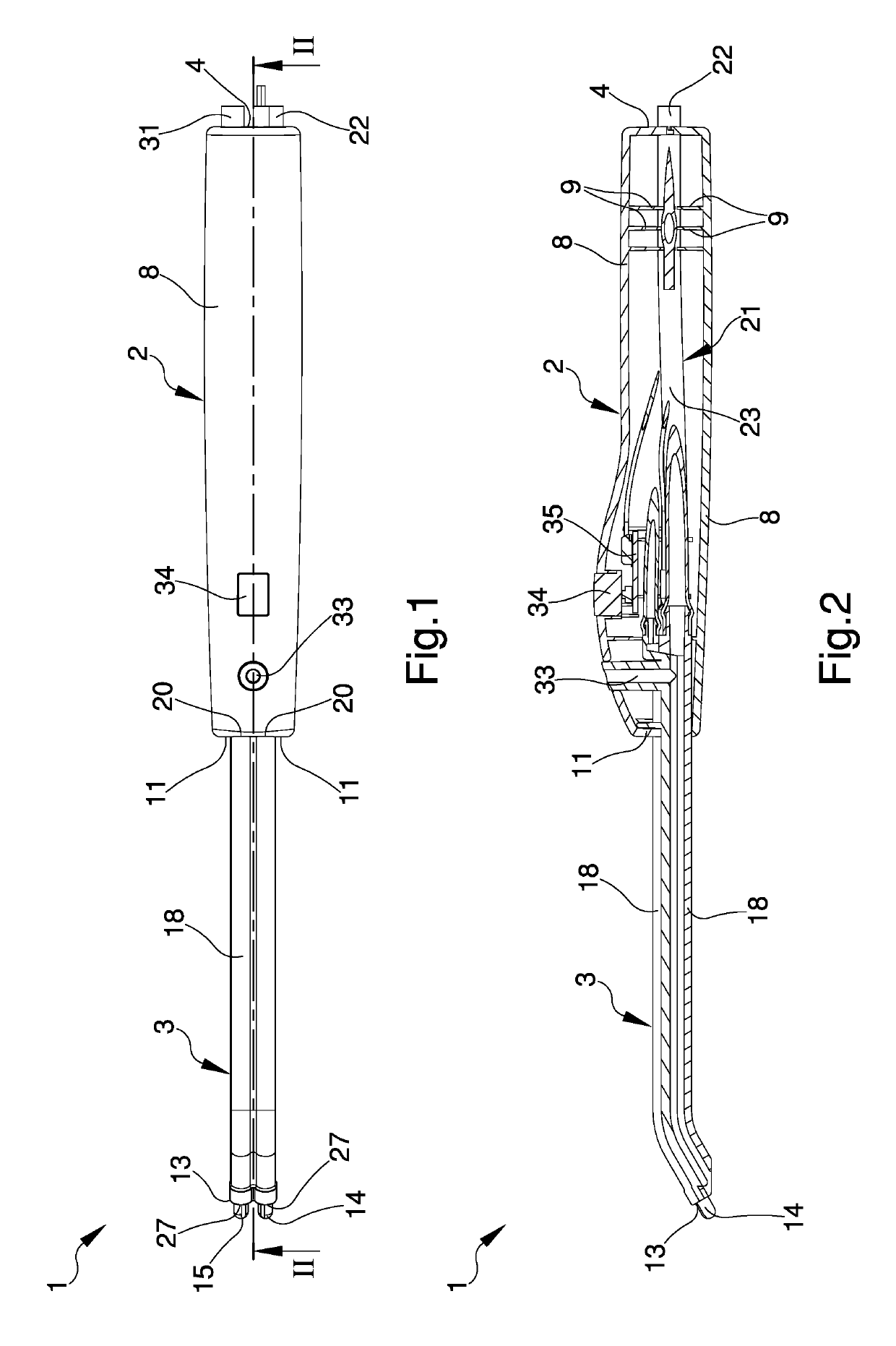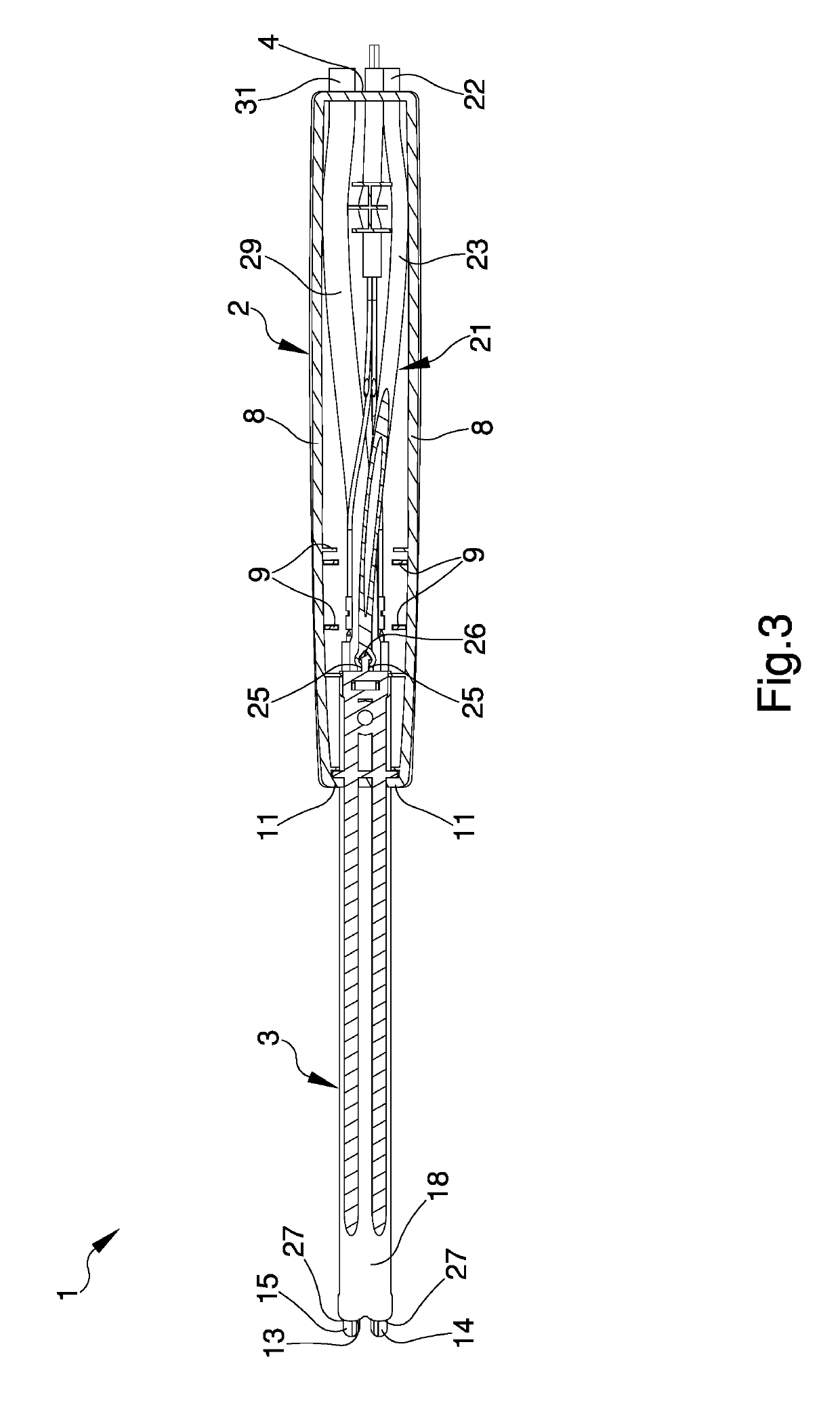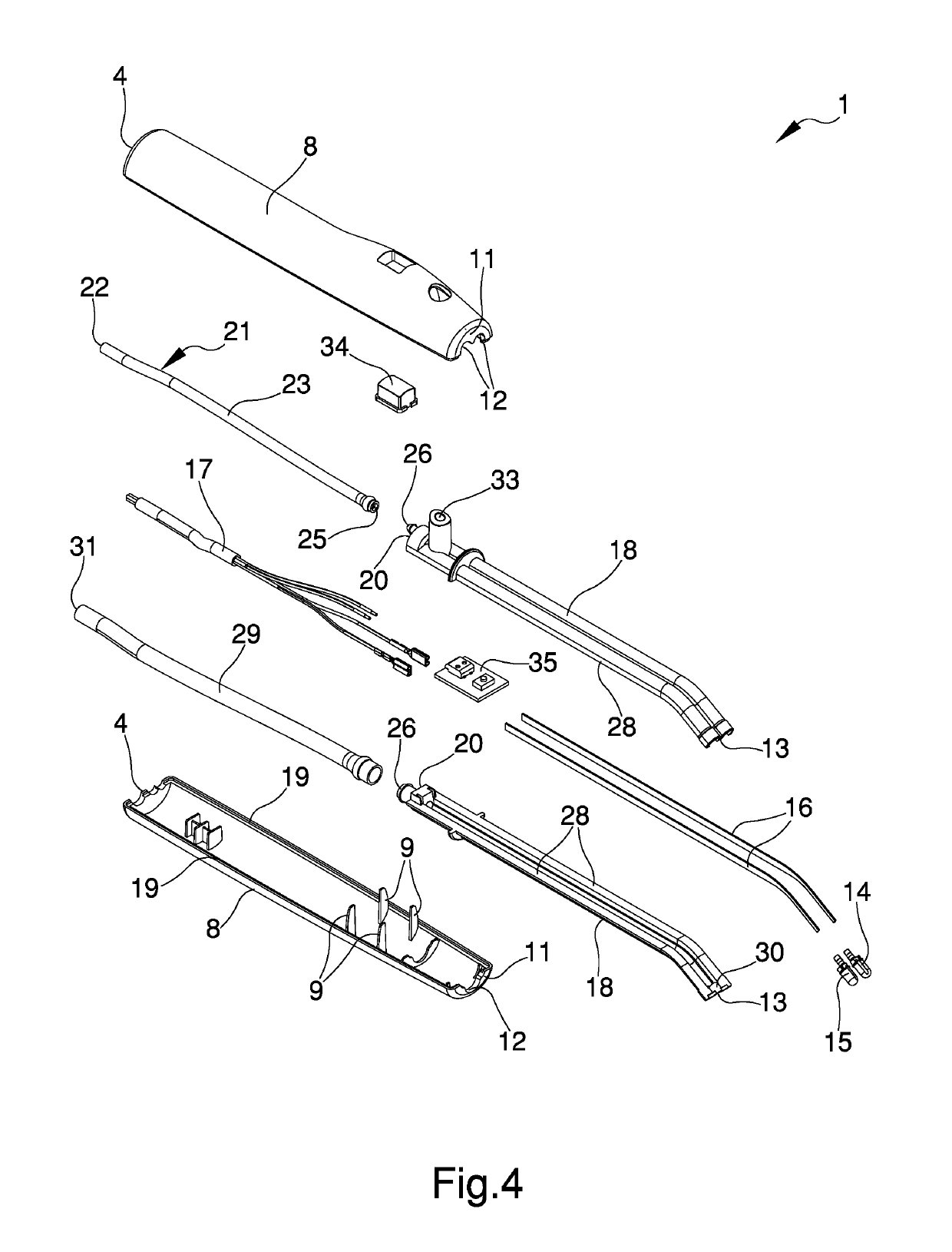Electrosurgical device
a surgical device and electro-optical technology, applied in the field of electro-optical devices, can solve the problems of high patient safety risk, difficult implementation of intra-operative conditions control, and cutting and/or cauterization of surgical instruments
- Summary
- Abstract
- Description
- Claims
- Application Information
AI Technical Summary
Benefits of technology
Problems solved by technology
Method used
Image
Examples
Embodiment Construction
[0037]The main aim of the present invention is to provide an electrosurgical device which permits achieving, by means of a single device, the coagulation, the transection and the hemostasis of the tissue involved.
[0038]One object of the present invention is to provide an electrosurgical device which permits considerably reducing the current intensity used compared to known devices, operating in deep tissues and in areas bordering on vital organs without the risk of causing burns and lesions to the tissues adjacent to the surgical site itself.
[0039]Another object of the present invention is to provide an electrosurgical device which permits avoiding the Pringle maneuver when used in liver surgery.
[0040]A further object of the present invention is to provide an electrosurgical device which permits keeping the operating field clean, eliminating the presence of blood.
[0041]Yet another object of the present invention is to provide an electrosurgical device which can be used in the case o...
PUM
 Login to View More
Login to View More Abstract
Description
Claims
Application Information
 Login to View More
Login to View More - R&D
- Intellectual Property
- Life Sciences
- Materials
- Tech Scout
- Unparalleled Data Quality
- Higher Quality Content
- 60% Fewer Hallucinations
Browse by: Latest US Patents, China's latest patents, Technical Efficacy Thesaurus, Application Domain, Technology Topic, Popular Technical Reports.
© 2025 PatSnap. All rights reserved.Legal|Privacy policy|Modern Slavery Act Transparency Statement|Sitemap|About US| Contact US: help@patsnap.com



